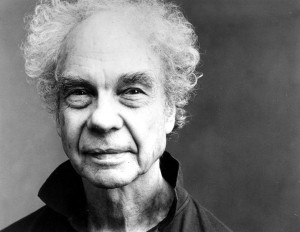I just finished watching a fabulous video: Lois Greenfield: The Anticipatory Art Form of Photography. There are plenty more where that came from as well. FORA.tv is an online video forum that boasts one of the world’s largest video collections from talks, lectures, debates, think tanks, and conferences. You can visit Jacob’s Pillow’s content channel and browse the offerings to see some wonderful, informative pieces. I think this is a great resource for dance/arts lovers, and have bookmarked it as a favorite of mine. I hope that you enjoy it too.![]()
Focus On: Merce Cunningham
Fans of Merce Cunningham might want to take a minute out of the day to read this interview on Artslynx. It’s incredibly detailed and very interesting.
There’s another good piece on PBS American Masters about the artist.
Also, the BBC has an interview that you can listen to on their site.
10 Questions With…Miriam Landis
Today we have an unusual interview–with writer/former dancer, Miriam Landis. She is the author of a book about ballet…but I don’t want to give everything away so…read on!
1. How did you wind up in dance?
My mom noticed early on that I was walking around the kitchen on my tippy-toes, so she put me in dance classes before I was even three. As I grew up I enjoyed ballet more and more and discovered I was good at it. When I was thirteen I started going away for six weeks to ballet summer programs in San Francisco, Philadelphia, and eventually New York. When I was sixteen, I attended the summer program at the School of American Ballet and they invited me to return for the full school year. I moved away from my family in Salt Lake City and lived in a dorm at Lincoln Center to attend SAB for my last two years of high school. After the annual workshop performances at the end of my senior year, Edward Villella invited me to join the Miami City Ballet.
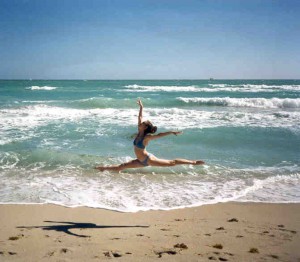
2. What was your career like?
It was a whirlwind. I joined Miami City Ballet when I was eighteen and started dancing soloist and principal roles within a year. My first big part was the Flower Festival in Genzano pas de deux. I worked hard and the big parts came quickly. I danced leading roles Scotch Girl in Scotch Symphony, the ballerina doll in The Steadfast Tin Soldier, and even Liberty Bell in Stars and Stripes. By the time I was twenty-two I felt like I had accomplished what I wanted in ballet and was ready for a change of direction. Ballet was such a core part of my identity that it was difficult to move on. It’s still a huge part of who I am today and I’ve been able to apply the discipline and other skills in many other aspects of my life. I also made lifelong friends who I’ll feel connected with forever. I was fortunate to have the experience of dancing with such a prestigious company and felt so close to the people I trained and performed with every day for four years. My whole world revolved around dance during that time in my life.
3. What have you done since you retired from dance?
I branched out my interests when I left. I traveled through Europe and did two different study abroad programs in France. In fact, much of the book was written while I was living in France at a time in my life when i could reflect in a meaningful way. I completed all of the pre-med courses in college but eventually decided I didn’t want to become a doctor. l found it hard to go from working with bodies in perfect form to bodies with disease without becoming emotionally overcome. I switched my major to English instead and pursued a career in publishing. I started writing “Girl in Motion” during my junior year of college. After I graduated from Stanford I moved back to New York and worked as an assistant editor at a major publishing house in New York. Three years later I had a great opportunity to move to Seattle and work at Amazon in book merchandising. I’ve been in Seattle for three years and met my husband here.
 4. Why did you decide to write the novel, “Girl In Motion”?
4. Why did you decide to write the novel, “Girl In Motion”?
There were two reasons. One was that I read a lot of ballet books as I grew up and never found one that fully reflected what my experience was like. I felt a real need to share what I learned with younger ballet students. Second, the writing was also for myself. I was trying to come to terms with leaving the ballet world, and writing was a good way to process my experience.
5. What audience is the novel aimed at?
It’s for ballet students and their parents, and anyone who is interested in ballet.
6. How did you draw on your personal experience with dance in terms of your writing?
I wrote about the emotions I felt and the struggles I watched my friends go through. The feelings remain vivid in my mind ten years later. It was easier to examine how we became professionals through the lives of fictional characters because so many of the themes are universal to every young dancer.
7. What was the experience of writing a novel like?
It was so challenging. There was too much I wanted to say and didn’t know how to express in words. Dancing is all about saying things without words, and writing is completely the opposite. I wrote so many drafts of “Girl in Motion.” At certain times it was in third person, had different titles, and focused on different characters. I tried so many different ways of expressing the story.
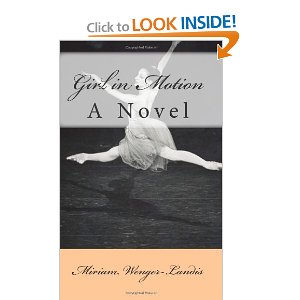 8. Do you have any advice for people who might be thinking about writing a dance novel?
8. Do you have any advice for people who might be thinking about writing a dance novel?
The publishing industry is difficult and a unique business world, which makes getting published through traditional routes a real challenge, especially if you don’t already have a persuasive way to market the book. Publishers want to see that. I’d say to worry about that later though, and first try to write the book. I always felt the challenge was to refrain from over-dramatizing ballet the way you often see it in done in films. It wasn’t easy to make the dancers seem like real characters that normal people can relate to, and that’s really important in a novel. Most people don’t go through the specific intense competition involved in a dancer’s life, and dancers’ experiences aren’t universal. Fiction needs to have more universal themes.
9. Can you share a favorite memory from when you were dancing?
One of my favorite memories was my very first performance with Miami City Ballet. We were dancing Western Symphony at the Olympics in Atlanta. I remember standing in the wings and watching all the dancers creating the ballet together, and there was just this incredible feeling of teamwork and love for what we were doing. I could see every person pushing themselves, concentrating, and striving for something larger than we could have done alone. The energy was just incredible.
I was so excited to be a part of it.
10. Where can people purchase your book?

The easiest place to find “Girl in Motion” is on Amazon.com.
You can also join the “Girl in Motion” Facebook page.
I’d love to know what people think of “Girl in Motion,” so don’t hesitate to post a review on Amazon or make comments on the Facebook page.
I hope people enjoy the book!
BIO: Miriam Wenger-Landis was a student at the School of American Ballet and a professional ballerina with the Miami City Ballet. She graduated from Stanford University and lives in Seattle.
Post Curtain Chat with Sean Stewart
This month on Post Curtain Chat we have Sean Stewart, dancer with American Ballet Theatre. Sean’s casual, “tell-it-like-it-is” mentality and heart of gold make him a refreshing guy to be around, and on a personal note, he is a wonderful friend of mine! He has led a remarkably diverse career – from his beginnings as a competition dancer, to training at the Paris Opera Ballet School and dancing a varied rep with ABT, this seasoned dancer has seemingly seen and done it all. In this edition of Post Curtain Chat, Sean talks of life in New York City, and schools me on the importance of not throwing around the word “Vegan” too casually!
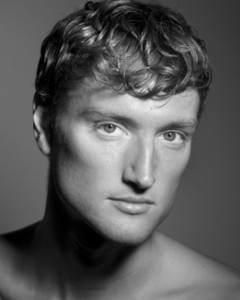
1. ABT has a quite a lengthy break in the summer after finishing their season at the Met. I know you did some guest work and traveling with your time. What were you up to?
Yeah, this year we had 3 months off and I decided to take full advantage. First, I did a show with John Mark Owen at Jacob’s Pillow. We stayed in this gorgeous log cabin in the mountains, so that’s where I kicked off my vacay. After that, I went to stay at a friend’s lakehouse in Virginia. Then I used some miles to fly to Mount Shasta in Northern California and then to Hawaii. It was a good summer… And thank God for frequent flyer miles!
2. What was your most memorable spot in Hawaii?
I really got into the town of Hale’iwa…SO cute! I also went to this waterfall in Wameia where I was able to swim up and go underneath…incredible!
Want to visit Hale’iwa? Click here!
3. You were a vegan before veganism became popular. Since you’re a pro on the subject, can you tell us a few of your favorite vegan spots in New York?
You have to be careful when throwing around the “Vegan” title, as some people take it very seriously, which I completely respect. I’m not really a Vegan. I just follow a diet comprised of mostly raw plant foods, which excludes animal foods. I do drink wine, which can use animal products in the refining and clarifying process. With that said, I really like the restaurant Counter in the East Village. Angelica’s Kitchen has a few really good items. Peace Food in the Upper East Side is also pretty yummy. Apparently, S’MAC has a Vegan mac and cheese that I’ve never tried. Pure Food and Wine and Quintessence are two “raw food” restaurants that I have frequented as well. There are so many now! I kind of live in the Mecca of Vegan/Vegetarian dining, which I love!
Click here to check out Angelica’s Kitchen in the East Village!
4. I’ve heard from many ABT dancers that the Met Season can be exhausting because of it’s numerous performances over a small period of time. Once a show is finished do you like to go out to unwind? Or would you rather go straight home to your bed?
Toward the beginning of the season, I try to be very responsible because I have to make it through 8 weeks of performing 6 days a week, while rehearsing all day long (after taking daily ballet class). I’ll usually take a taxi straight home after the show and go to bed. Toward the end, I loosen up a bit, especially if I don’t have anything too taxing to dance.
 5. You’ve now lived in New York City for 17 years. As I’m sure you know, it can be a challenging place to live for a number of reasons. Can you offer any advice for those who sometimes feel they are being eaten alive by the big city?
5. You’ve now lived in New York City for 17 years. As I’m sure you know, it can be a challenging place to live for a number of reasons. Can you offer any advice for those who sometimes feel they are being eaten alive by the big city?
I had a very hard time adjusting to the city when I first came here. It’s an amazing city, with everything to offer. I knew that from the moment I got here. I was overwhelmed and exhausted though, as I was going to high school as well as working with a ballet company. Eventually, I found “my” NYC. I like to stay in the village mostly. It it feels more calm to me, but it still retains the youthful energy of the city. When I’m uptown, I’ll take a moment to head into Central Park and recharge my battery. Also, get plenty of sleep! You don’t have to do everything that NYC has to offer!
6. The East Village is one of the hottest neighborhoods in New York right now. As an East Villager yourself, do you have any favorite places to hang down there?
I grew up mostly in the east village, so it really feels like home to me. I never know where anyone goes out there. Lately, I’ve been dropping into Shoolbred’s and Ninth Ward, both have very cool vibes.
Click here to check out Shoolbred’s in the East Village!
7. Finally, give us three words that describe who you are as a dancer, and three words that describe who you are once the curtain has closed.
I’m giving you six words that describe me both in dance and in life: analytical, cerebral, ironic, intuitive, controlled, unpredictable.
Born in Mt. Holly, New Jersey and raised in Vacaville, California, Sean Stewart joined American Ballet Theatre as a member of the corps de ballet in 1997. He began dancing at the age of 10 with Lisa Clark, started ballet at 12 with Yanina Cywinska, and went on to study at Joffrey II and the Paris Opera Ballet School. He participated in summer programs for The Joffrey Ballet in San Antonio and the Bolshoi Ballet at Vail.
Stewart left ABT in 2002. He has performed as a guest artist with the Washington Ballet, Ballet NY, Lar Lubovitch Dance Company, Atlanta Ballet and Chamber Dance Project. Stewart was an original cast member in the Old Globe’s production of Twyla Tharp’s The Times, They Are A Changin’.
Stewart rejoined American Ballet Theatre in January 2008.
In addition to various corps roles in all of ABT’s full-length ballets, Stewart’s roles with the Company include Lankendem in Le Corsaire, the Nutcracker-Prince in The Nutcracker, Benno in Swan Lake and roles in Airs, Black Tuesday, Citizen, Cruel World, The Elements, Marimba, One of Three, Sinfoniettaand Stepping Stones. Stewart created roles in Everything Doesn’t Happen at Once, Gong and Known by Heart.
To see Sean and the rest of ABT perform, visit www.abt.org.
Also, look for ABT’s brand new Nutcracker by Alexei Ratmansky this holiday season at the Brooklyn Academy of Music!
Dance Slam Competition Comes To Chicago
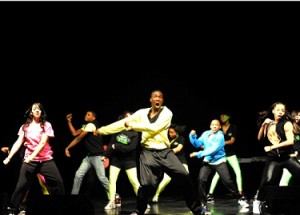
This is a courtesy post…
What is Dance Slam?
Dance Slam is an interactive dance competition that will feature over 550 dancers from 35 different Chicago-area companies. Many dance styles are included, such as hip-hop, ballet, breaking, street, jazz and contemporary. Each piece is five minutes or less and the audience votes for the winners.
When is Dance Slam?
October 22nd at 7:30 p.m.
Where does it take place and what is the cost to attend?
University of Chicago Campus at Mandel Hall in Hyde Park. Tickets are $25.
Where can I find out more information, such as who will be participating?
More information is available at Dance Chicago.
- « Previous Page
- 1
- …
- 38
- 39
- 40
- 41
- 42
- …
- 78
- Next Page »






